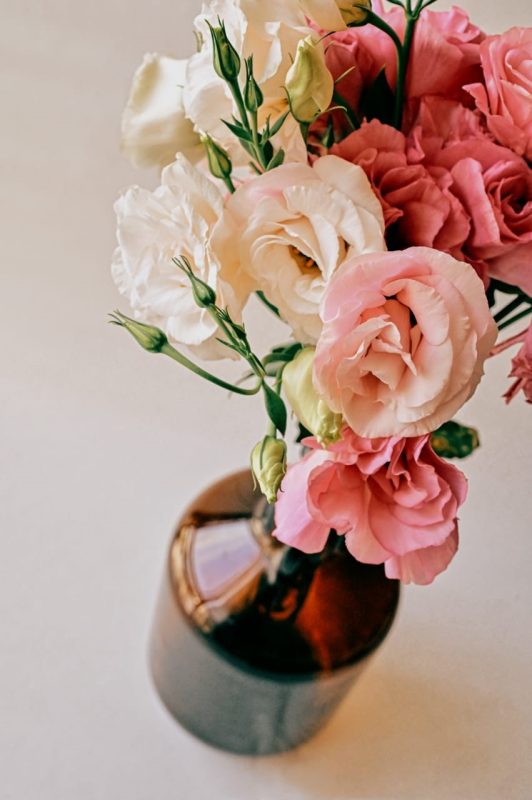
Apart from roses, lilies, chrysanthemums, etc., this world is filled with astonishing beauties. Today we are going to talk about one of those rarely known to the general public, Lisianthus. Being garden enthusiasts, we love providing you with information about flowers you may not know about. So here is an article filled with common facts you should know about this slightly rare beauty, Lisianthus. A flower that people mistake for roses and peonies!
Meaning
Gratitude and Affection
About
Greek has a lot to do with flower history. The word Lisianthus is made up of two Greek words, “lysis” which means dissolve, and “anthos” which means flower. Just like most of the other flowers, Lisianthus’ scientific name, Eustoma, is also named after a mixture of Greek words. Where “eu” means beautiful and “stoma” means mouth. GIving it a meaning of, beautiful mouth-shaped flower, mainly because the size of the flower is quite big, approximately 3-4 inches wide. Although its scientific name is further completed as Eustoma grandiflorum, other common names for Lisianthus are bluebell gentian and prairie gentian.
Facts
This multi-layered bloom is a small genus from the family of gentians. It is native to prairies, coming from the fields of northern Mexico and North America. Being herbaceous perennials, they come back as annual. Although the common colors that Lisianthus comes in are white, pink, blue, red, yellow, and purple, you will see them in various shades as well. Having said that, they come in various species too, for instance, you will see them in trimmed edges, dual tones, or dual budded flowers. However you want it, you may have it!
Lisianthus blooms in a group of 4-6 blooms that too in a pair of full flowers along with almond-shaped buds and for this reason, they can be used as both; filler, base, and lead flowers in any flower arrangement. This quality makes them perfect for bouquets, other than that, they can also be used in corsets and boutonnieres perfectly. Lisianthus has honorably gained the reputation of being one of the most in-demand flowers for bridal bouquets.
How To Grow
These delicate-looking romantic flowers are very sturdy and can be less moody to look after. As they grow 1-3 ft tall and 6-12 ft wide when matured, make sure to leave enough space in between while planting the seeds. They will mature in approximately 6-7 months, so it would be better if you plant the seeds in late summer so that the flower will be in its full bloom by mid-spring. The zone that suits them best is usually warm, so check your zone’s care tips before planting. If summer in your zone is harsh, try to give the plant shade during hot hours. Lisianthus thrives best when planted in moist, well-drained soil and full sun. The pH level of the soil should be neutral, usually between 6.5-7. Water the plant accordingly, however, allow it to dry in between.